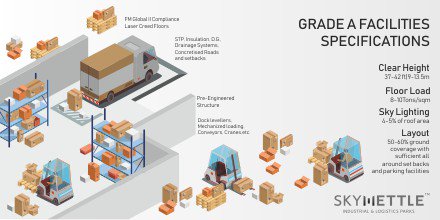Co-warehousing: The next big thing in logistics industry
After co-working and
co-living, the next big thing in the world of shared spaces is co-warehousing-
collaborative workplaces for businesses with physical products and art
entrepreneurs.
With e-commerce witnessing
unprecedented boom across the globe, many small businesses are facing logistics
issues especially last-mile delivery which carries an in-proportionate cost. Having a conventional
warehousing space in India means long, multi-year contracts, hiring operation
staff, acquisition of expensive machinery, its maintenance, and not to mention the
monthly utility bills.
Thus, warehousing marketplace is experiencing a
trend towards collaborative economies and greater flexibility, where different
businesses can seamlessly receive, store and ship merchandise from a shared
warehouse without the harshness of costly rents, maintenance or long term
commitments. Such spaces also give businesses ability to customize a storage
plan that matches very specific needs, regardless of company size.
Other advantages of such
shared warehousing marketplaces are:
1.
Leveraging of equipment:
Besides divvying up many direct and indirect costs like security and utility
bills, co-warehousing also saves you from purchasing expensive equipments like
forklifts, pallet-jacks, industrial grade racks etc, opening up the market to
smaller players and start-ups.
2.
Scalability: Co-warehousing
lets users to adapt quickly to variable demand,allowing for an incremental
rollout, which presents less risk than housing a considerably larger amount of
product if the launch is less successful than desired.
3.
Flexible labour: Co-warehousing
brings with it the flexibility of cross-trained associates who have access to
state-of-the-art warehouse and management systems and can handle a multitude of
situations based on customer needs.
While industrial spaces
developers in India have already started building large logistics park where multiple
companies with warehousing and inventory management needs can operate under one
roof, some global firms are taking the idea a notch higher, trying different
permutations and combination within collaborative spaces. One such combination
bringing together co-working and co-warehousing.
These community centres of innovation will have
places to work and hold meetings, similar to what more traditional co-working
spaces offer. But there will also be places for small entrepreneurs and artists
to store their goods and creations, hire shared logistics services and
heavy lifters as needed, all on site. For artists, there will even be gallery
space to host exhibition, and event space for all to use.




Comments
Post a Comment